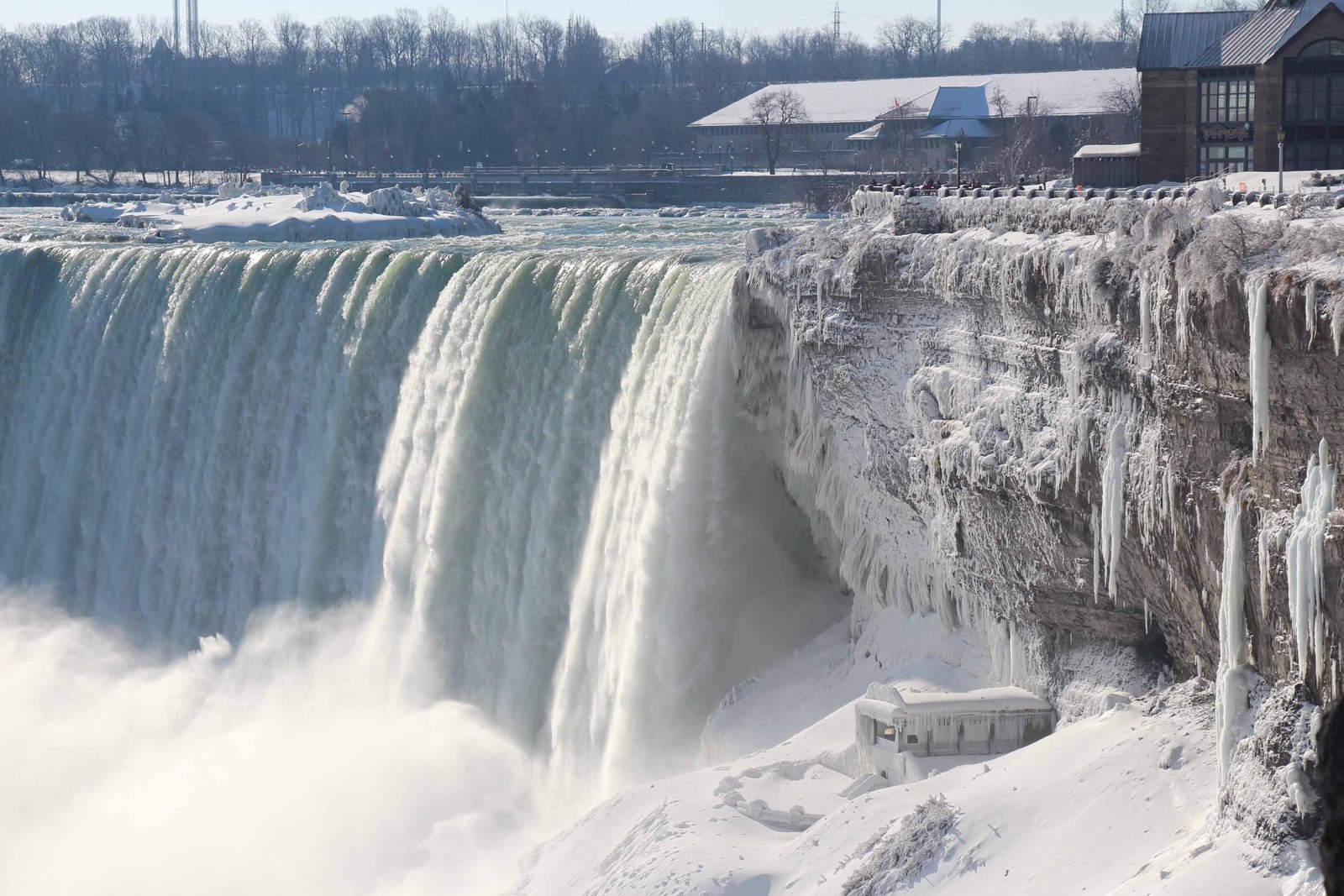Institute of Transport Economics and Meteorological Institute in Norway and four Indian research institutions – The Energy and Resources Institute (TERI, Delhi), School of Planning and Architecture (SPA, Delhi), Indian Institute of Science (IISc, Bangalore) and Indian Institute of Technology Bombay (IIT Bombay), will collaboratively work on developing mitigation and adaptation strategies for the transport sector in India
New Delhi, December 10: The Research Council of Norway has launched a new research project ‘CLIMATRANS – Coping with Climate: Assessing Transport Sector Strategies for Climate Change Adaptation and Mitigation for Indian Cities’ that will be implemented during the next three years. The project will assess climate change impacts in urban areas in India and aims to develop mitigation and adaptation strategies for the transport sector. Delhi, Mumbai and Bengaluru have been selected as case cities for further research.
The Indian transport system is one of the largest in the world and the demand for mobility and energy use for the transport sector has increased with rapid growth of economic activity. India is experiencing a dramatic increase in urbanization and increase in car ownership, which has resulted in a number of negative impacts.
“It is important to study Indian cities in terms of both their present as well as the projected transport sector contributions to local emissions of pollutants and greenhouse gas emissions and the impacts of future climate change. In fact, climate change might already have caused adverse effects on different settlements in India,” explains Dr Farideh Ramjerdi, Institute of Transportation Economics, Norway, who is the CLIMATRANS project manager.
CLIMATRANS is an interdisciplinary project within the realms of social and natural sciences and in close consultation with city and national stakeholders. Institute of Transport Economics and Meteorological Institute in Norway and four Indian research institutions – The Energy and Resources Institute (TERI, New Delhi), School of Planning and Architecture (SPA, New Delhi), Indian Institute of Science (IISc, Bangalore) and Indian Institute of Technology Bombay (IIT Bombay) – will collaborate in this research.
“Bengaluru is one of the fastest growing cities in Asia with a thousand vehicles being registered everyday. In 15 years, the city is projected to have 4.7 million cars on its roads. Increasing congestion and slow peak hour speeds are a result of private vehicles taking up 90 per cent of road space. But policies have so far focussed on constructing elevated roads and underpasses rather than improving public transit facilities and non-motorized transport,” points out Prof Ashish Verma, CLIMATRANS project partner from IISc, Bangalore. “It is important to understand the consequences of these trends in terms of climate change mitigation and adaptation so that policy makers in Bengaluru have a clear scientific perspective while framing transport policy towards a sustainable city.”
“In Delhi, vehicles contribute to an estimated 67 per cent of the total pollution load,” remarks Prof Sanjay Gupta, CLIMATRANS project partner from SPA, Delhi. “While various policy interventions such as reduction in sulphur content of diesel and petrol, implementation of Euro norms and CNG have led to reduction of emission levels, the progress is far from satisfactory and needs a serious relook in terms of evolving desirable policies and strategies which ultimately would improve the environmental quality of the city.”
“We hope that the project will enhance our understanding of how climate change affects the transportation sector and vice-versa. The outcome of the project should help policy makers in developing strategic transport plans for adaptation and mitigation,” says Dr Munish Chandel, CLIMATRANS project partner from IIT Bombay.
“As the countries of the world discuss climate commitments in Lima this week and in Paris next year, this study will produce valuable information for the transport sector in India,” notes Ms Neha Pahuja, CLIMATRANS project partner from TERI.
india on Wednesday dropped attempted suicide from a list of crimes punishable by prison, potentially paving the way for the release of a human rights activist who has been on hunger strike for the past 14 years.
The government informed parliament of its decision in a written reply from the home ministry on Wednesday, saying it was acting on a recommendation of the Law Commission.
The government panel for legal reform had deemed the suicide law “anachronistic” and “undesirable” in a 2008 report.
Irom Sharmila has been on hunger strike in protest against army atrocities in the northeastern Indian state of Manipur. Under the old law anyone attempting to kill themselves is liable for a jail term of a year.
She has been under detention throughout her fast, and is force-fed by tubes several times a day.
The World Health Organization has listed India as one of the countries with the highest suicide rates – 21.1 per 100,000 people in 2012.
The Indian government said 134,799 people committed suicide in 2013, a rise of 11.9 percent over the previous year. There was no data on the number of attempted suicides, it said.
More than 800,000 people each year worldwide commit suicide — around one person every 40 seconds — WHO said in September.
The first time John Lennon met Paul McCartney, Lennon was about ready to go onstage with his band the Quarrymen. One of the group members knew McCartney from school, so he introduced him to his bandmates. Lennon was 16; McCartney was 15. It was July 6, 1957, and the most significant meeting in rock history was about to go down.
The six-piece Quarrymen were setting up for their 8 p.m. performance in the garden of Liverpool’s St Peter’s Church. After chatting for a few minutes, McCartney showed Lennon how to tune his guitar. He then played a few classic rock ‘n’ roll songs — including cuts by Gene Vincent and Little Richard – to show Lennon what he was capable of.
Then the Quarrymen performed. “I just thought, ‘Well, he looks good, he’s singing well and he seems like a great lead singer to me,’” McCartney said of Lennon’s performance to Record Collector magazine in 1995. “Of course, he had his glasses off, so he really looked suave. I remember John was good. He was really the only outstanding member, all the rest kind of slipped away.”
Incidentally, that Quarrymen show was recorded on tape and sold for approximately $120,000 in 1994.
After the show, the Quarrymen, along with McCartney and another pal, went to a pub, where they lied about their ages to get served. Lennon was so impressed with McCartney’s natural talent and knowledge of music that he and the other members of the group later asked McCartney to join them, even though Lennon was a bit hesitant to invite such a powerful figure into his group.
A year later, George Harrison joined the band. By early 1959, everyone else had quit, leaving the trio of Lennon, McCartney and Harrison without a real group. Within a year, they picked up another member, a drummer and renamed themselves the Beatles. You know the rest.
Nelson Mandela’s country, one year after his death, a feeling of grim frustration has taken hold.
South Africa is a land of highest highs and lowest lows — and over the past few months, the pendulum has swung to the pessimistic end of the spectrum.
As South Africans paused Friday to remember their former president and reflect on his legacy, the country’s weighty challenges — a sputtering economy, resurging crime, political paralysis — were front and center.
It doesn’t help that many of us are in the dark. Huge swathes of South Africa’s cities have been without electricity for hours and days as Eskom, the musty old power utility, enforces “load shedding,” or rolling blackouts. The power cuts in recent weeks have been the worst in many years as Eskom struggles to meet demand.
This isn’t the only state entity in trouble — postal workers just last week returned from a months-long strike. With no mail delivered since August, and with Christmas nearing, there is a massive backlog of letters and parcels.
All of this spells trouble for an already faltering economy, with GDP growth forecast at just 1.4 percent for 2014.
Mumbai, Dec. 4 — Back in 2011, when Kangana Ranaut and Aanand L Rai worked together for the first time, they delivered a hit, Tanu Weds Manu. Now, they’re currently working on a film that is being touted as a sequel to the 2011 comedy, but has no similarity to the original story.
Kangana’s performance in this film seems to have impressed the director as he has now decided to cast her in another one of his films. She will be seen playing the role of a new-age Heer in that project.
Apparently, after seeing Kangana’s performance in director Vikas Bahl’s Queen, Aanand had written a challenging role for her for the ‘sequel’. But when the film’s shoot started in Delhi, he realised that she was pulling it off with great ease. Aanand says, “Kangana and I love to work with each other. After Tanu Weds Manu, I wanted to challenge the actor in her, and she overcame those challenges very smoothly. So, I decided to come up with something even more challenging for her.”
Is it true that he plans to give Kangana a tragic avatar in that film? “Yes, that idea has always been in my mind. I have already had a tryst with a tragedy (with his 2013 directorial venture Raanjhanaa), so I don’t mind revisiting it. But the idea will take its own time. I haven’t set a deadline for it since I can’t think of anything else except the sequel (to Tanu Weds Manu) right now,” says Aanand.
–
- Owner of Tommy the chimp tells Guardian case is ‘ridiculous’
- Attorney for Nonhuman Rights Project likely to continue appeal
A chimpanzee is not a legal person, a New York appeals court has decided, saying that no matter how great apes are, they cannot give back to society in a way that merits human rights.
Rejecting an animal rights group’s bid to expand the definition of “legal person” to chimpanzees, a five-judge panel found that although the animals are autonomous beings they do not take part in the societal bargains that guarantee rights like bodily freedom.
In October the attorney Steven Wise, representing the Nonhuman Rights Project, made a case that a privately owned chimpanzee named Tommy was unlawfully imprisoned in New York, and should be transferred to a sanctuary in Florida. Wise argued that chimpanzees, having shown self-awareness, intelligence and empathy, are close enough kin to humans as to deserve some rights.
But while the court granted that chimpanzees share much with humans and are not simple objects, like chairs or tables, justice Karen Peters wrote in the court’s decision that apes cannot contribute to society or suffer legal consequences of their actions.
“Needless to say, unlike human beings, chimpanzees cannot bear any legal duties, submit to societal responsibilities or be held legally accountable for their actions,” Peters wrote.
Wise’s cases on behalf of Tommy and three other chimpanzees are the first to argue that habeas corpus can apply to a non-human. The writ would have forced Tommy’s owner, Patrick Lavery, to prove to the court he could justify Tommy’s imprisonment.
From his home in Florida, Lavery told the Guardian that he found the idea of giving Tommy certain human rights “a ridiculous statement, in my opinion”.
Lavery has declined to appear at any of the case’s hearings and learned of the court’s decision from the Guardian. He defended the small building in which he keeps Tommy as “an excellent home” with TV, several rooms and outdoor enclosures. “He’s happy there,” Lavery insisted.
“He’s not being illegally detained. He’s legally there, and of course we have to abide by the rules. Tommy’s got an excellent home, and he never knew what it was like to have a home where he was loved and cared for before.”
Wise did not immediately respond for a request for comment. He has said he will take the case to New York’s highest appeals court.
Peters wrote that the courts have not left Tommy and other chimpanzees defenseless, pointing out that New York has a ban on keeping primates as pets. She said that Wise could lobby the state to pass laws granting greater protections of chimpanzees.
Wise’s suit does not allege that Lavery has broken the law in his treatment of Tommy, and Lavery said that he follows all federal and state regulations. Lavery said he found the central premise of Wise’s suits mystifying.
“From what I understand, after he frees the chimps he’s gonna go after the elephants, he’s got other species on his list,” he said. “But they’re not gonna be free at another sanctuary.
“It’s different if an animal’s been pulled out of the wild, but an animal that’s raised domestically, by humans, they’re used to being fed and cleaned up after.”
In many of his arguments, Wise notes that habeas corpus was used in the 18th century to help free a slave, a comparison Lavery considered inappropriate.
“If a slave means you have somebody wait on you and feed you and clean up after you and do all that, to me that’s not the definition of a slave, in my opinion,” he said.
Wise has also argued chimpanzees should have legal “visibility” as children do, but Peters was careful to include a riposte to that line of thinking.
“To be sure, some humans are less able to bear legal duties or responsibilities than others. These differences do not alter our analysis, as it is undeniable that, collectively, human beings possess the unique ability to bear legal responsibility,” Peters wrote.
The appellate court’s decision upholds a state judge’s 2013 ruling. Before a separate court on Tuesday, Wise argued on behalf of a deaf chimp named Kiko, who lives with his owner in Niagara Falls.
A Gorkhaland state: Exploring the possibilities
At a time when the Indian state is confronted with many critical socio-economic problems, it is really quite disturbing and disconcerting to see some dormant statehood movements rearing their heads in the wake of the recent formation of a new Telangana state through division of the extant state of Andhra Pradesh. Such demands inter alia include demands for a separate state of Gorkhaland (comprising Darjeeling and adjoining areas of Terai and Dooars), Kamtapur (comprising areas of Assam and North Bengal) and Greater Cochbehar (comprising most of North Bengal) in West Bengal, Bodoland and Karbi-Anglong in Assam, Harit Pradesh, Bundelkhand and Purvanchal in Uttar Pradesh, Mithilanchal in Bihar, Vidarbha in Maharashtra and Saurashtra in Gujarat.
It is really quite painful to know that even after 67 years of our hard-earned independence, we are yet to complete our state-building process, not to speak of the nation-building process. One feels that all these statehood movements of different genres are nothing but morbid expressions of these incomplete processes. Having seen, at least, one such movement at close quarters and having followed many others quite closely, one can definitely say that most of these statehood movements are more of a reflection of the selfish and egotistic desires, steeped in self aggrandisement, of the local elites of different hues than being embedded in the genuine aspirations of the local inhabitants. Most of the times, such movements are inspired by the politics and politicking of one or the other kind rather than being rooted in the real desire for a holistic development and good governance of the area concerned.
In West Bengal, the demand for a separate state of Gorkhaland is claimed to be as old as 107 years. The proponents of this movement advance many reasons in support of their demands. They argue that Darjeeling geographically was never a part of West Bengal, that Darjeeling has been hugely exploited and underdeveloped by West Bengal and that Gorkhas being a different ethnic community, they deserve a separate state of their own. Then, the Gorkhaland supporters also demand the 398 contiguous and non-contiguous mouzas (read villages) of adjoining Terai and Dooars areas of Siliguri and Jalpaiguri to be added to the proposed Gorkhaland state, mostly against the will and desire of the people therein. The argument proffered for such inclusion is the inhabitance of a substantive Nepali speaking population in these areas though there is already a counter movement by majority of the population in these areas against any such thinking or attempted move.
Now, if we dissect and discuss all these reasons along with some other more important associated factors of statecraft dispassionately, the demand for a separate Gorkhaland state definitely does not appear more than emotional outpourings of the people of Darjeeling. If we really consider the historicity of Darjeeling as a ground for formation of a separate state of Gorkhaland, then all the hard work done by our founding fathers led by the redoubtable Sardar Vallabhbhai Patel of unifying those 565 motley princely states into a united Indian federal state might come apart. The real idea behind consolidating all these small princely provinces into a larger unit to be part of a larger federal entity called India was to put together a unified and a more cohesive country. However, once we allow this logic of historicity, India should actually be having hundreds of states today with West Bengal itself being broken into many. Such regressive revisionism would be a very negative development and might unravel our composite co-existence as a modern nation-state.
Now, let’s consider some other issues involved here. The hill areas of Darjeeling (Gorkhaland movement is primarily confined to the three hill sub-divisions of Darjeeling district of West Bengal district namely Darjeeling Sadar, Kurseong and Kalimpong) has a population of around 9.75 lakhs of which around seven lakhs people can roughly fall into the category of Gorkhas, the remaining being Lepchas, Bhutias, Marwaris, Biharis, Tibetans and other non-Gorkha communities. So, the proponents of this movement are actually seeking a separate state for these seven lakh people, the others perforce being part of the movement with no choice being available to them. In fact, the Lepchas have already been expressly complaining of being shortchanged by the Gorkhaland champions. The term ‘Gorkhaland’ itself is not a hold-all concept and ergo, does not do justice to the identities of the various other ethnic communities as residing in Darjeeling.
So, if a recognition were to be given to a statehood demand for a people of seven to nine lakh population, then how many constituent states or provinces should we be having in this country of over 125 crore people. If our mighty Gorkhas were to be given a separate state, then how many states are we actually bargaining for in a country where we have over 5000 ethnic communities and castes with around 850 languages. If this demand is recognized, then what justification shall we have to deny a state for the Yadavas, the Jats, the Rajputs, the Santhals, the Meenas and what not, with most of them having a sizable population, in fact, many of them being much more numerous than the Gorkhas.
Again, the demand for ceding the contiguous mouzas or areas with sizable Gorkha population attacks the very concept of pluralism which is the hallmark of our salad-bowl or Ganga-Jamuni co-existential culture. The Gorkhaland proponents desire that all the nearby areas with substantial Nepali speaking population also be given to the proposed Gorkhaland state. Even if we ignore this most important factor of our societal pluralism being compromised as a result of such a parochial demand for a while, still such a demand is very difficult to be accepted for some practical considerations.
First, this is plainly wrong to assume that all the Nepali speaking people are ipso facto Gorkhas or want Gorkhaland. Secondly, most of the demanded areas have a predominant majority of the people other than the Nepali speaking population. Thirdly, even some of the areas where the Nepali speaking people are in majority are mostly enclaves within another district or other community dominated areas. Annexing these areas to the extant Gorkhaland Territorial Administration (GTA) or later to the demanded Gorkhaland state is administratively not a feasible proposition as also observed by the Justice Shyamal Sen Commission which was constituted to explore the feasibility of such inclusions. Also, the Nepali speaking population in most of these mouzas is estimated to be not more than 20-30 per cent meaning thereby that by ceding such areas to the new entity, a great disservice shall be done to the desire of the other communities who are in majority in those mouzas. In fact, there is already a strong counter movement against this desired merger with the proposed Gorkhaland state.
Besides, once we recognize such a demand, a Pandora’s Box shall be opened. It not only jeopardizes the plural character of our society by artificially trying to make it monochromatic, but also opens the flood-gates for similar such demands from vested interests in different parts of the country. After all, every state has some population of one or the other ethno-linguistic groups which can suitably be demanded by other states. By this logic, all the Bengali speaking areas of Assam should come to West Bengal or the Hindi speaking or tribal dominated areas of latter should go to Bihar or Jharkhand respectively. By the same logic, the entire Hindi heartland of North India should become a huge monolithic state. The resultant outcome of acceding to such a demand may indeed be very chaotic. It is a very archaic and regressive thinking which ought not to be given any further encouragement.
Again, the alleged historical exploitation of Darjeeling by the state of West Bengal does not hold because Darjeeling has the best of social development indicators in the country and is definitely among the best in West Bengal. As per the West Bengal Human Development Report, 2004 prepared under the supervision of the United Nations Development Programme (UNDP), Darjeeling was ranked 2nd and 4th in terms of the gender and human development indices respectively, among all the districts of West Bengal.
If underdevelopment and exploitation of Darjeeling can be cited as a justification for statehood, then Darjeeling ought to fall much behind in the queue for promotion to statehood as there are many more regions in the country which would have the first claim to statehood. Be it the income, literacy rates, educational attainments, nutritional status, percentage of BPL (below poverty line) population, longevity, infant and maternal mortality, overall health status of people and infrastructures, Darjeeling fares much better compared to most parts of the country or the different districts of the state of West Bengal. Be it noted that Darjeeling has for the past more than two and a half decades been under such autonomous local self-government bodies as Darjeeling Gorkha Hill Council (DGHC) and GTA.
But still, if the statehood proponents believe that Darjeeling needs more development, then statehood is definitely no solution. We are all well conversant with the experiences of some of the already existing states whose development record is just pathetic, to say the least. Jharkhand became a state against the same background of alleged underdevelopment, but even after a lapse of more than a decade’s time, it is still much far off from realization of the developmental goals it set out to achieve way back in the year 2000. Jharkhand today fares very badly among the newly created states and has only become worse since its creation. The fact remains that the proponents of any such statehood movements including those of Gorkhaland should actually be talking of good governance and good administration than anything else. A statehood trapping sans the desideratum of good governance will achieve nothing but zilch.
Then, given its size, both demographically and geographically, Darjeeling already receives a disproportionate per capita share of resources compared to many other parts of the country. And a substantial share of these resources come from the state of West Bengal meaning thereby that West Bengal has traditionally been providing disproportionate resources to Darjeeling, often at the expense of the more backward and deserving areas of the state. The extant Gorkhaland Territorial Administration’s revenue from all sources is assumed to be not more than three crores annually. If we also include the revenue received by the state government from such sources as land, excise, transport, professional and sales tax, then at most the figure is likely to go up to around 30 crore rupees. At the most and at its best, tapping all the obtaining and potential sources of revenue, it can barely go up to 100 crore rupees annually in the most ideal of situations. In the shorter run, however, a 50 crore rupee annual revenue appears a more practical figure.
Moreover, GTA reportedly has a non-plan expenditure of around 600 crores at the moment which with plan and schematic expenses would come to around 1400 crores. If at all Darjeeling comprising the three hill sub-divisions becomes the cherished Gorkhaland state, the combined plan and non-plan expenditure is likely to shoot up to, at least, 2000 crores factoring the expenses for general and police administration, not to speak of various attendant expenses which comes with the formation of a new state. So, if a region which has the best of developmental indicators and which has the revenue generation potential of only around 50 crore rupees, why should they be getting a disproportionate 2000 crores at the expense of the more deserving parts of the countries, particularly those areas of Chhattisgarh, West Bengal, Orissa, Bihar, Jharkhand, Maharashtra, Andhra Pradesh and other states reeling under extremist menace.
The Gorkhaland proponents should show that they are in a position to bear all the non-plan and, at least, a portion of the plan expenses of the proposed Gorkhaland state before demanding the same. If such a new entity expects to be spoon-fed through the Central government’s doles, would not there be similar justified demands from different parts of the country. And if we allow this for one particular region, can we deny the same to others. We ought to understand that an eponymous Gorkhaland state is not just about emotional wishes of our countrymen in Darjeeling, but has much far-reaching insidious implications for the rest of the country as the same would only spur more and more such demands as already seems to be happening in the wake of the announced creation of a new state of Telangana.
The Gorkhaland proponents often compare their status with the neighbouring Sikkim or the smaller states of North East when they claim statehood or disproportionate share of the developmental pie. We are all aware of the historical reasons and circumstances which led to the statehood or special status of these north-eastern states. If Telangana has today been proposed to be a state, it is because of its geographical compactness, a suitable demographic size, administrative viability and self-sufficient resources. But the same does not apply to many such demands elsewhere including Gorkhaland. If all of us keep demanding statehood on such grounds, then our state-building process shall never come to an end, not to speak of the nation-building process. The Gorkhaland proponents should actually aim at making the GTA work successfully, which came into being through a tripartite agreement between the Central Government, the Government of West Bengal and the dominant hill party i.e. Gorkha Jan Mukti Morcha (GJMM) on 18th July, 2011. GTA is an autonomous and empowered body which has just completed one year of its existence and can be suitably harnessed to fulfill the developmental aspirations of the local people, if development is what they are looking for.
One really feels that our policy makers should really do some serious thinking to consider all such statehood demands dispassionately once and for all through the instrumentality of a second States Reorganization Commission or any other such mechanism as might be practically possible. Any such decision by the said Commission should be predicated on some logical pre-determined criteria including geographical contiguity and compactness, administrative cohesiveness and financial viability. If we continue dithering on such issues and allow them to be decided by the narrow forces of politics and politicking, then we are certainly doomed as a modern nation-state with the entrenched vested interests slowly but surely eating into the vitals of our beloved country.
3 / 5 stars
Juno director Jason Reitman makes a spirited attempt to capture the essence of modern digital life, as porn-addicted husband Adam Sandler finds he’s not the only one seeking online solace
There’s a funny YouTube compilation from dozens of modern thrillers and horror films, simply showing panicky people all saying: “My cellphone! I can’t get a signal!” Modern movie-making is unhappy about modern digital devices messing up traditional plot devices. Cyber-interconnectedness is spoiling solitude, ruining jeopardy. So this movie from director Jason Reitman and his co-writer Erin Cressida Wilson (which they adapted from the 2011 novel by Chad Kultgen) is an interesting, spirited, if finally rather sentimental attempt to tackle this issue and set it to rest. It wants to show 21st-century lives being lived out on screen and online, with both older and younger generations now dependent on the web. Teens get bombarded with adult material unimaginable to their parents at the same age; grownups are infantilised, tempted into digital arenas of fantasy and irresponsibility.
It’s a watchable soapy drama, though audiences who remember films by Todd Solondz or Antonio Campos on similar themes – or indeed Erin Cressida Wilson’s own great screenplay for Secretary (2000) – may find it a bit softcore. One subplot incidentally comes close to reproducing the punchline of Rupert Holmes’s song about piña colada and getting caught in the rain.
The film has a dreamy framing sequence set in space, accompanied by deadpan narration from Emma Thompson, musing on Planet Earth being in Carl Sagan’s words, a “pale blue dot”. This puts the teen angst into perspective, rather like the observatory scenes in Rebel Without a Cause.
The taciturn male at the centre of this ensemble is Don, a depressed guy in a stagnant marriage played by Adam Sandler; his only solace is online porn, far more important than the old-fashioned staples of TV and beer. In search of his fix, he one day finds that the Wi-Fi is only working for the computer in his 15-year-old son’s bedroom, where a browser history reveals that young Chris (Travis Tope) is consuming harder stuff than his dad. This is impeding his relationship with super-hot cheerleader Hannah (Olivia Crocchicia), whose failed-actress mom Donna (Judy Greer) now manages Hannah’s own lucrative subscription porn/voyeur fansite. Meanwhile, Tim, played by Ansel Engort (from The Fault in Our Stars) has dropped out of the school football team to dedicate himself to (or, in his words, “invest in”) an immersive online fantasy roleplay game, and has now formed a relationship with shy Brandy (Kaitlyn Dever), whose uptight, controlling mom (Jennifer Garner) monitors her every keystroke. The kids’ cyberfreedom is dependent on the adult bill-payer.
What a fantastically unwholesome situation it all is, and yet interestingly this film is both a melodramatic intensification of real-life web addiction, and also a cautious dilution. There’s nothing in this film about people walking hilariously into lamp-posts while looking at their phones – but also nothing about revenge porn, nothing about private humiliation going viral. Yet there are sharp moments of alienation and fear. Reitman and Wilson show that Donna’s creepy fansite becomes acceptable to mother and daughter simply because they are so deeply excited by the increasing numbers of subscribers and the accretion of homemade celebrity, very like the weekly uptick in follower numbers that no Twitter user admits to being interested in.
At first, Reitman makes quite a conspicuous play of showing online graphics on the screen itself: the Facebook pages, the web browsers, the text messages get flashed up over the frowningly entranced faces bent over their laptops and phones. There is some ironic comedy to be had here: particularly in two people secretly and derisively texting about a third person who is right in front of them, a dysfunctional practice camouflaged by the fact that everyone is on their phones all the time. As the movie advances, and ironic detachment recedes, this on-screen gimmick noticeably declines, too, and by the end it has disappeared altogether, although everyone’s web use has not really diminished one bit. Yet while it lasts, this is an interestingly metaphorical display of movies and online content competing for our frazzled attention.
In some ways, Men, Women & Children is a little like those movies of yesteryear about how TV (and particularly TV news) is terribly worrying. But this one inevitably tends towards emotional fence-sitting because of its reluctance to condemn its characters and satirically abandon them to their supposed web enslavement. A movie that really engages with web use still eludes us. In the meantime, this engaging black-comic sketch will do.
Professor Marston and the Wonder Women (2017)
| Release | : | 2017-10-13 |
| Country | : | United States of America |
| Language | : | English |
| Runtime | : | 108 |
| Genre | : | Drama |
Synopsis
Watch Professor Marston and the Wonder Women Full Movie Online Free. Movie ‘Professor Marston and the Wonder Women’ was released in 2017-10-13 in genre Drama.
The unconventional life of Dr. William Marston, the Harvard psychologist and inventor who helped invent the modern lie detector test and created Wonder Woman in 1941.
Streaming Movie Professor Marston and the Wonder Women
(2017) Online
Incoming search term :
Watch Professor Marston and the Wonder Women Full Movie Online Free Streaming In HD Quality, watch full Professor Marston and the Wonder Women movie, Watch Professor Marston and the Wonder Women 2017
Online Free Viooz, Watch Professor Marston and the Wonder Women 2017 Online Free, Watch Professor Marston and the Wonder Women 2017 Online Putlocker, film Professor Marston and the Wonder Women
online, Streaming Professor Marston and the Wonder Women 2017 For Free Online, streaming movie Professor Marston and the Wonder Women 2017, Professor Marston and the Wonder Women film trailer,
Professor Marston and the Wonder Women movie trailer, live streaming film Professor Marston and the Wonder Women 2017, Streaming Professor Marston and the Wonder Women 2017 Online Free Megashare,
movie Professor Marston and the Wonder Women streaming, Watch Professor Marston and the Wonder Women 2017 For Free online, film Professor Marston and the Wonder Women 2017 online streaming,
download Professor Marston and the Wonder Women 2017 movie now, movie Professor Marston and the Wonder Women 2017 download, watch full movie Professor Marston and the Wonder Women 2017, trailer
film Professor Marston and the Wonder Women 2017, Watch Professor Marston and the Wonder Women 2017 Online 123movies, Watch Professor Marston and the Wonder Women 2017 Online Free 123movie, Watch
Professor Marston and the Wonder Women 2017 Online Free Putlocker, movie Professor Marston and the Wonder Women 2017 trailer, Watch Professor Marston and the Wonder Women 2017 Online Free
netflix, watch Professor Marston and the Wonder Women film online now, Professor Marston and the Wonder Women 2017 movie streaming, Professor Marston and the Wonder Women 2017 Watch Online, Watch
Professor Marston and the Wonder Women 2017 Online 123movie, download movie Professor Marston and the Wonder Women, Watch Professor Marston and the Wonder Women 2017 Online Free megashare, watch
Professor Marston and the Wonder Women movie now, Watch Professor Marston and the Wonder Women 2017 Online Free hulu, Watch Professor Marston and the Wonder Women 2017 Online Viooz, live streaming
movie Professor Marston and the Wonder Women 2017, Professor Marston and the Wonder Women live streaming film online, movie Professor Marston and the Wonder Women 2017, Watch Professor Marston and the Wonder Women 2017 Online
Megashare.










![Online [Free Watch] Full Movie Professor Marston and the Wonder Women (2017)](http://www.realnewsofindia.com/wp-content/uploads/2014/12/Zandra-looks-back-190x122.jpg)







Recent Comments